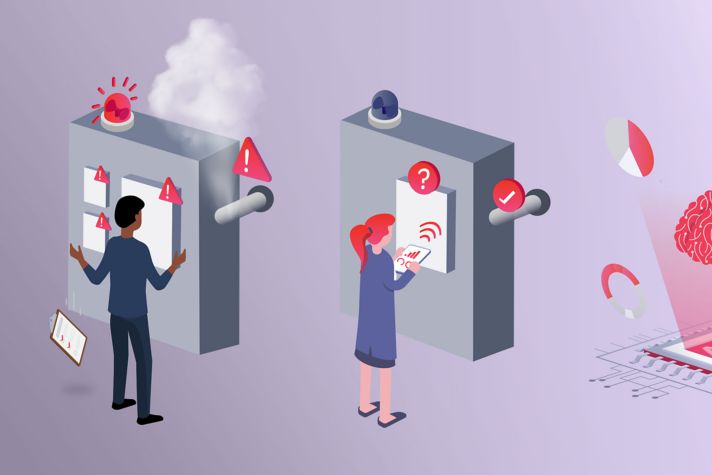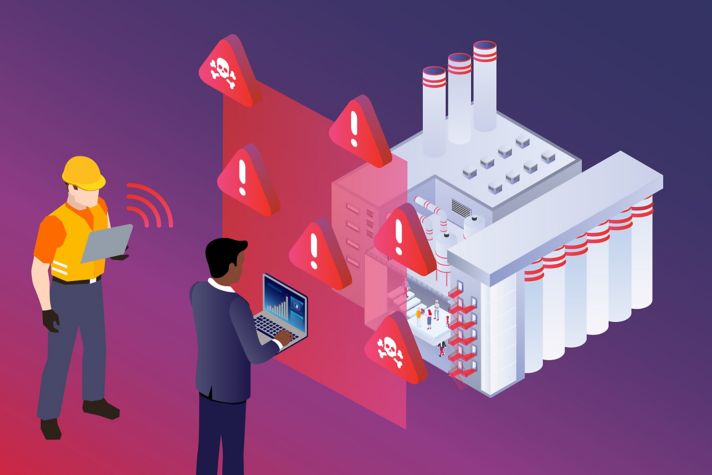Buildings That Learn: Take Your Buildings From Average To Intelligent
When it comes to corporate real estate, is average enough? Especially when others in your industry are leaping ahead and achieving more toward sustainability goals, improved operational efficiencies, and enhancement of the tenant experience.
Intelligent building experts from Honeywell and Microsoft recently came together to talk about optimizing building operations so portfolio managers could take their buildings from average to intelligent.
Building Portfolios, the Current State
Corporate real estate has managed building operations the same way for decades, but it’s difficult for an enterprise to stay ahead of the competition (or ride out a turbulent economy) if they’re behind the times.
Many companies in corporate real estate have portfolios that include a wide variety of building ages, types and uses. They are also often dealing with HVAC and building systems from different generations and manufacturers.
All this makes it almost impossible to manually optimize performance at the enterprise level. Plus, commercial building maintenance can be difficult and costly if not done right.
Average Building Operations = Manual, Reactive
Now that we’ve outlined the current landscape of corporate real estate, let’s look at some historic building management practices.
A lot of corporate real estate time can be spent around scheduled approaches to finding problems – checking systems and assessing them according to a very fixed plan. But that has disadvantages because you are only checking the system at one static time and not assessing full performance.
Since this type of maintenance is not necessarily data-driven it's not the most efficient and effective at delivering the services and outcomes that most organizations are hoping to achieve. Systems and operations may be working, but it’s difficult to know if they are optimized or performing at their peak. And when something breaks, it’s often a surprise and repairs become reactive.
This manual process also places a lot on the shoulders of the building workforce. Historically, commercial real estate has had localized resources looking after buildings. Teams either work on several small buildings within a certain radius, or with a very large building the team that's managing the building is often stationed on-site. Either way, the pool of skills is very fixed.
There is a reliance on longstanding skills from senior experienced technicians, which can create issues when a building experiences generational change as older technicians retire and newer members of the workforce have to come to grips with the experience they don't yet have.
All of this – legacy buildings and systems, scheduled maintenance, workforce competency – may seem like too much to take on when thinking about implementing smart building operations, but there is a solution. (And it’s not that difficult to implement.)
Intelligent Building Operations = Efficient, Data-Driven, Proactive
Through advancements in technology, helped by partnerships like Honeywell and Microsoft, organizations can transition away from their current average state. Building management solutions have come a long way and now it’s possible to harness the untapped value in data.
Building portfolios are now able to gain tremendous intelligence through cloud-based data analytics, IoT and machine learning to:
- Connect existing systems with a vendor agnostic solution
- Collect and unify asset and performance data
- Unlock insights to improve building performance
- Automate manual processes
- Perform predictive maintenance
- Remotely control operations from anywhere, anytime
Freeing siloed systems, bringing together disconnected applications, and removing reactive components of the older business model allows for the integrating and consolidating of all sources of data. A single truth is now possible, and this will ultimately enable businesses to manage their buildings more efficiently and effectively (plus, much of it can be done remotely).
When intelligent automation is enabled, deviation in the behavior of assets is used to help automatically move to the next best step. You can best optimize building efficiency and performance with minimal effort solutions such as predictive analytics. When repair or maintenance is needed, remote worker assistance or resets are possible, as are automated work order creation and technician dispatch.
And it can all be done at scale, meaning not just for one building but potentially for thousands of buildings across an immense geography.
Why Smart Buildings Are Critical for the Future
Honeywell and Microsoft enable enterprises to make informed data-based decisions and help building operations and corporate real estate leaders gain better visibility and better control of maintenance and performance. Here’s why we do it and believe it’s so important:
- Owner and tenant empowerment: We empower owners and tenants with data. We democratize building data and make it easily and securely accessible to all parties for transparency and experience.
- Employee empowerment. Our smart building solutions provide access to data from all building systems for smart decision-making that only experts can make today. It simplifies real estate management and helps makes new employees experts by giving them tools to succeed.
- Sustainability: We believe building optimization is an important way to contribute to a sustainable future. Buildings consume a lot of energy – contributing up to 40% of the carbon footprint – but Honeywell and Microsoft can help slash this. When we focus IoT on buildings, we make a significant contribution to a sustainable future.
- A better experience: Safe, healthy and exciting spaces positively impact experience and productivity. Real estate should serve as a strategic asset to help drive productivity and to attract and retain top talent.
- Efficiency: Autonomous buildings are more efficient and valuable. Portfolios that are mostly autonomous make better decisions related to cost, environment, occupants and long-term financial returns.
Improve Your Building’s Efficiency, Performance and Sustainability
Ready to improve your building’s efficiency, performance and sustainability?
A software-first approach makes it easy for you to add outcome-based solutions. Learn how you can merge IT and OT data into a unified platform, deploy cost-effective building applications and gain performance insights across one building or your entire portfolio. Contact us to request a consultation.



